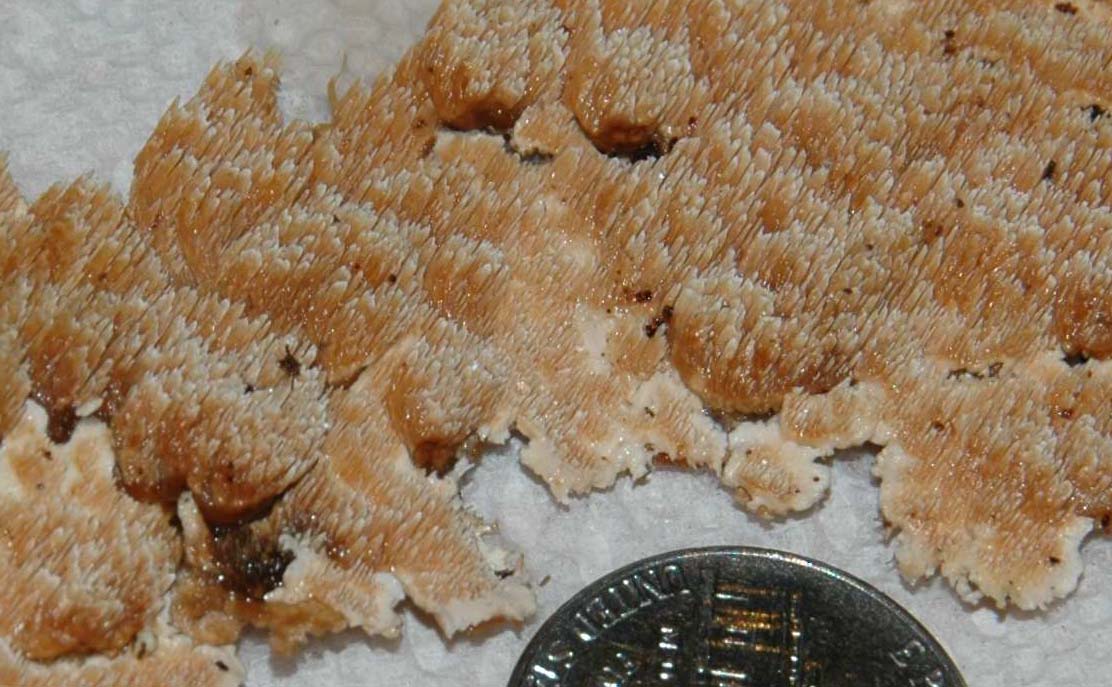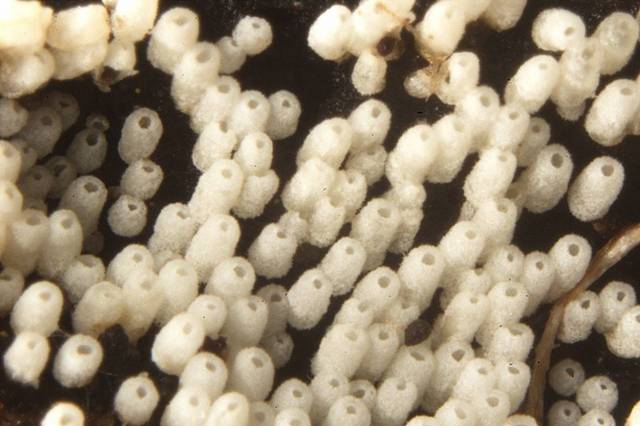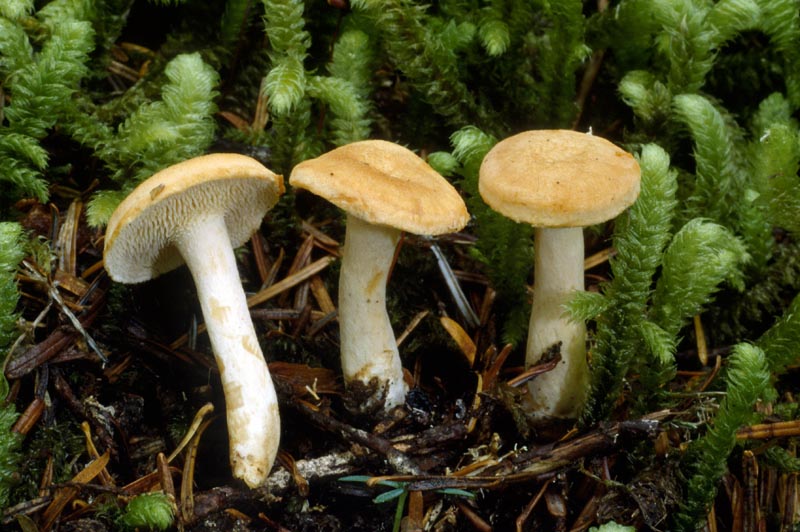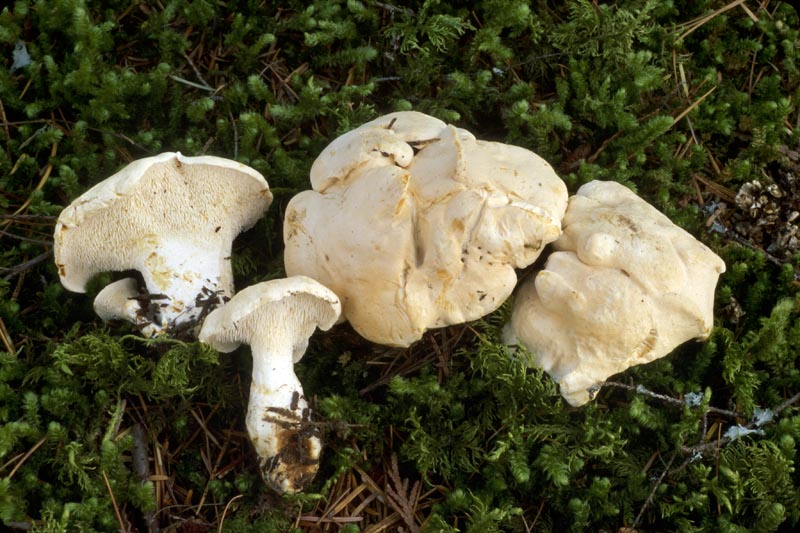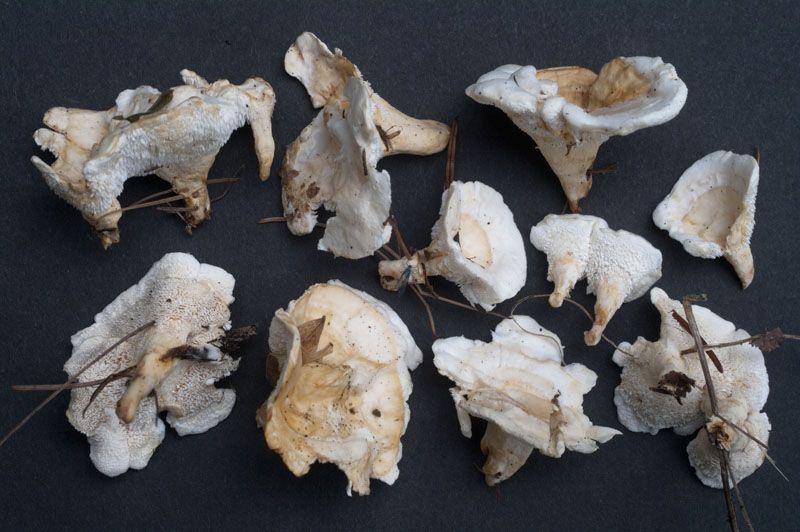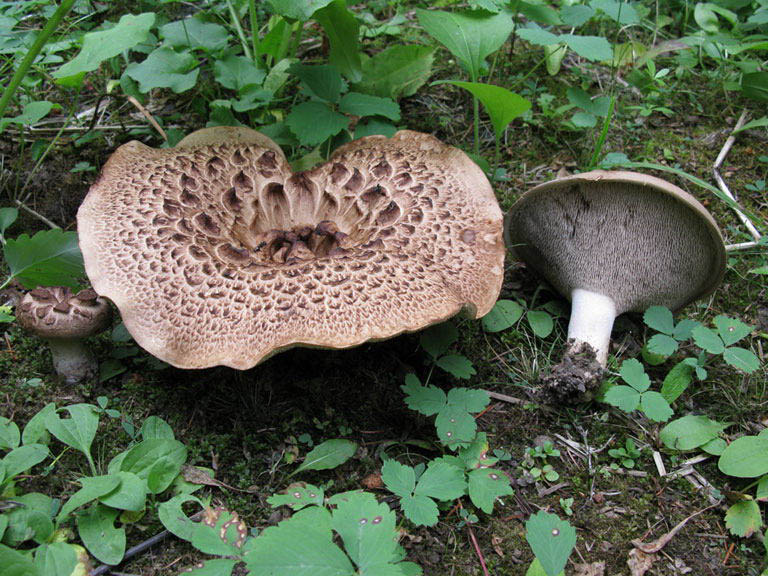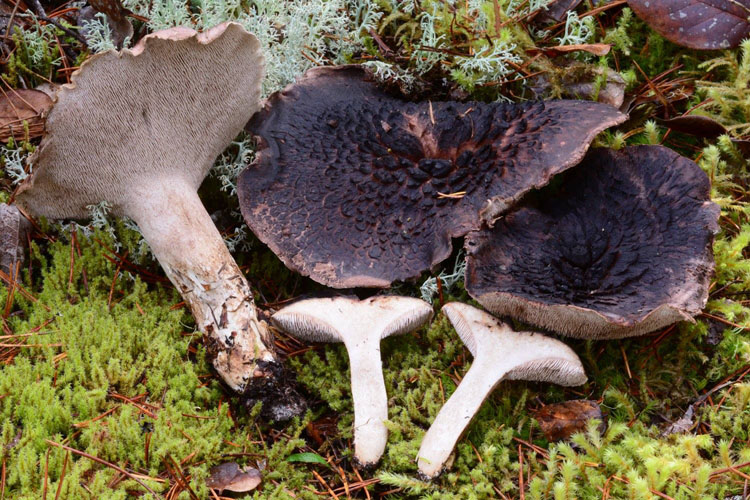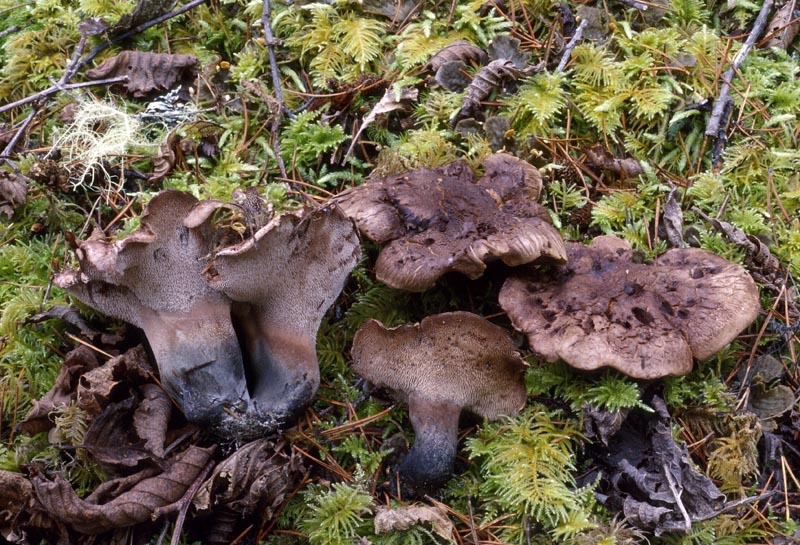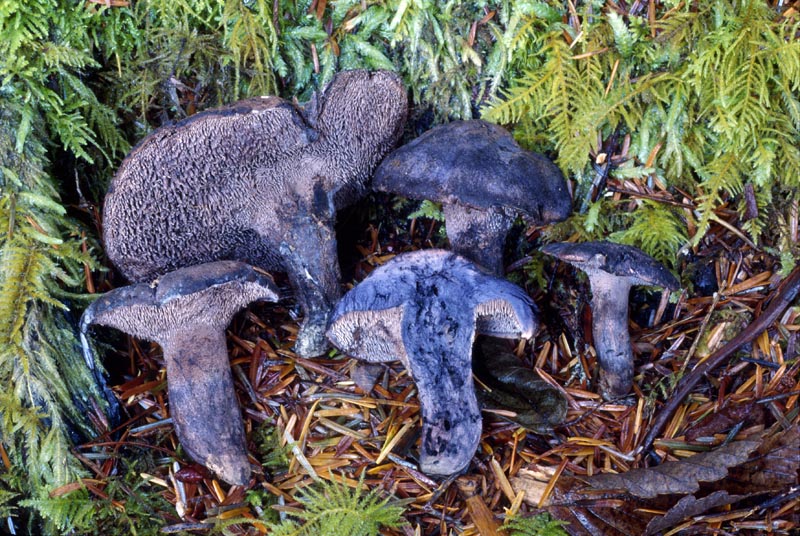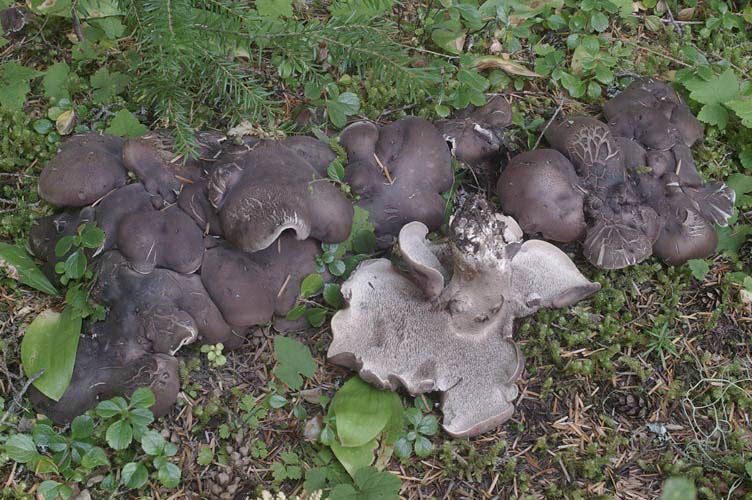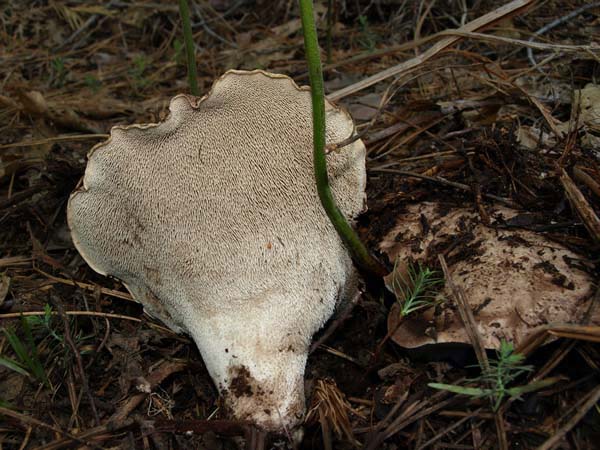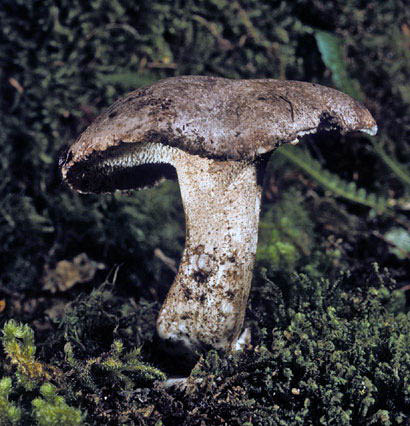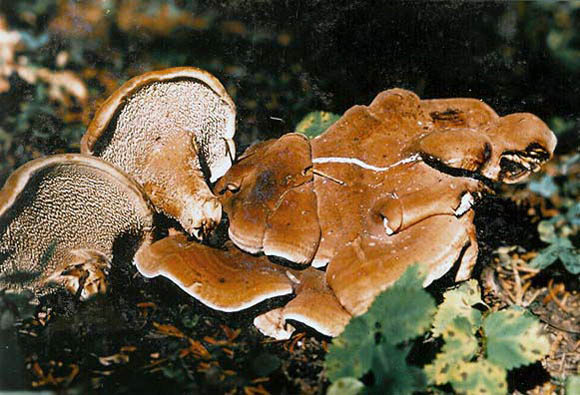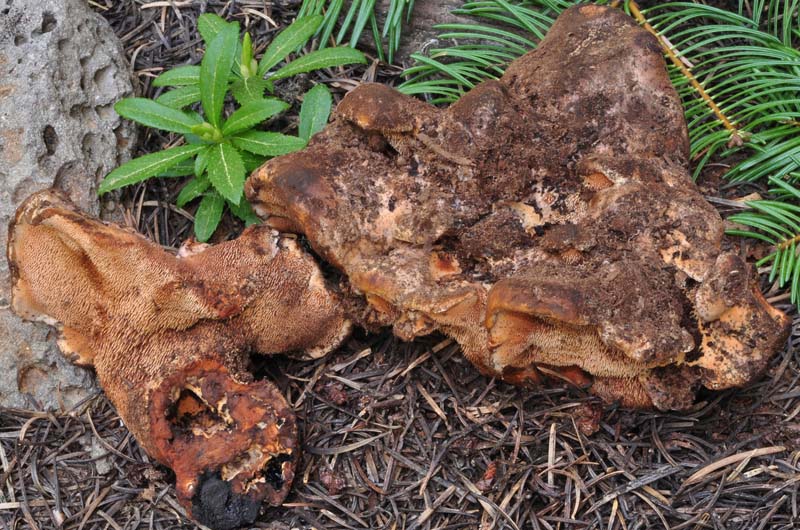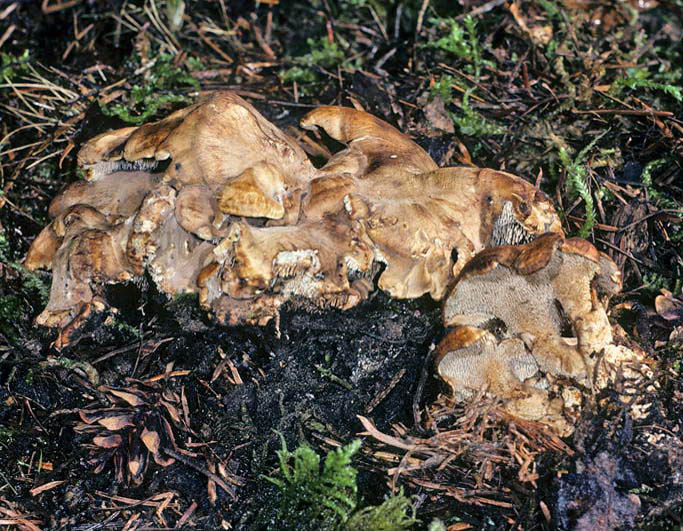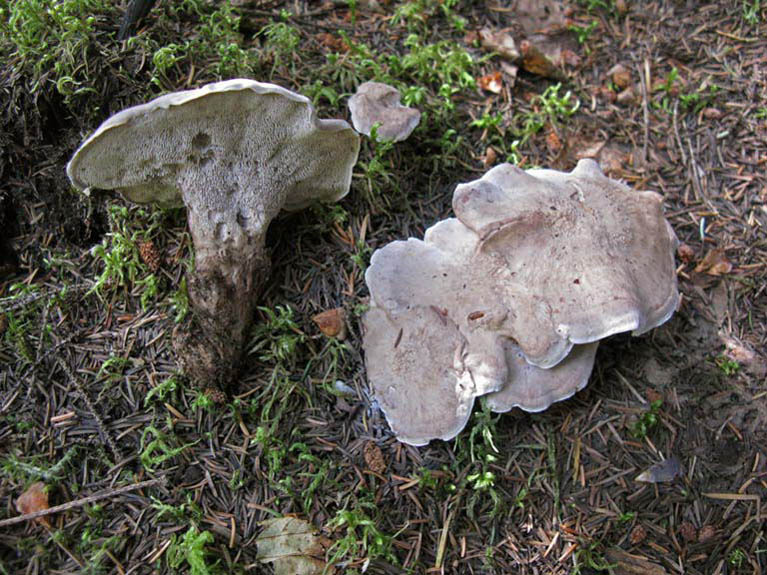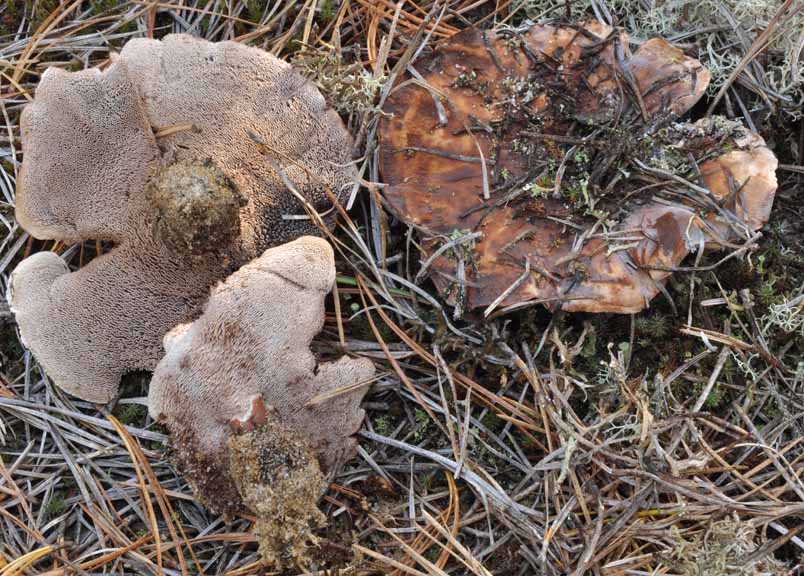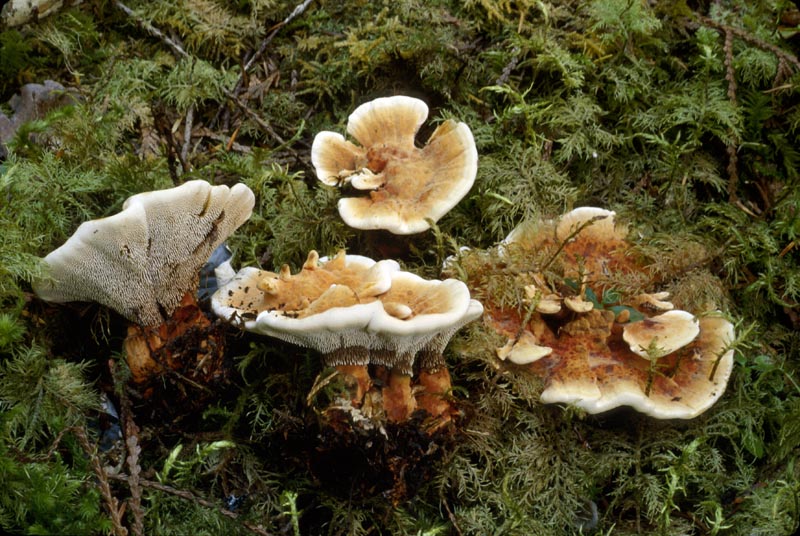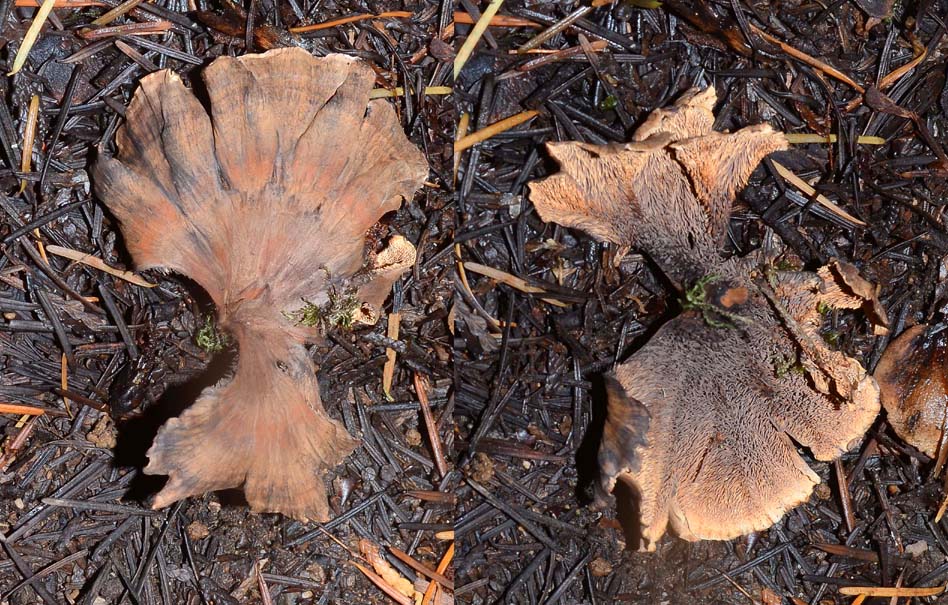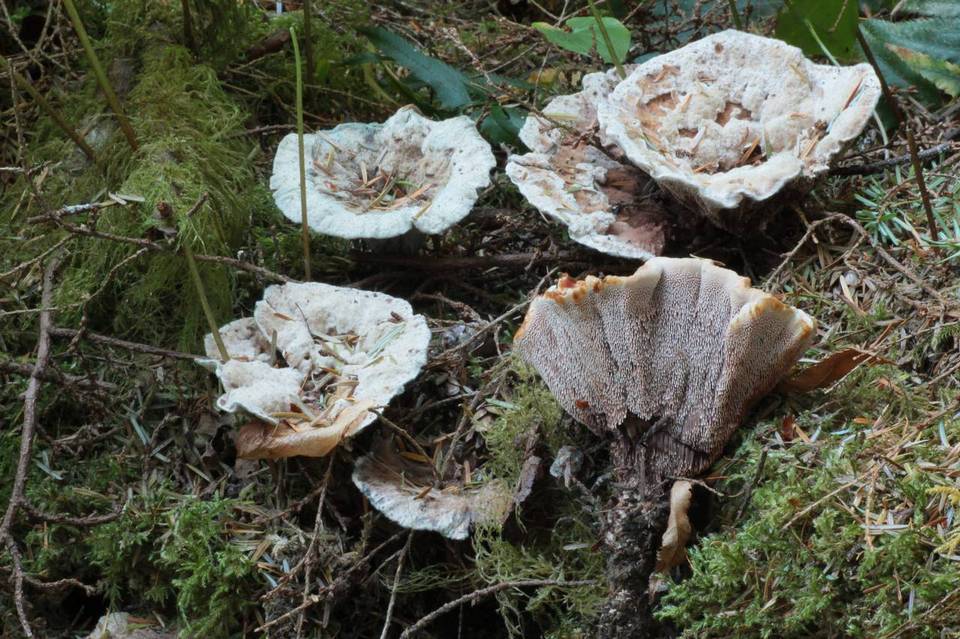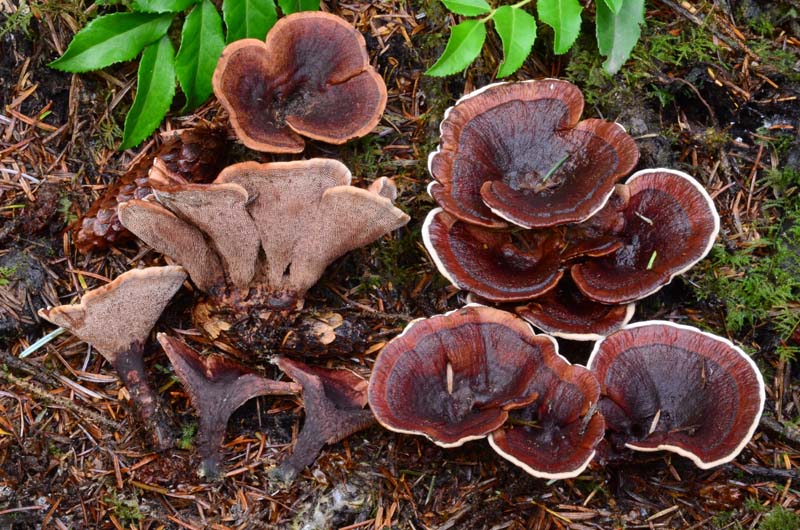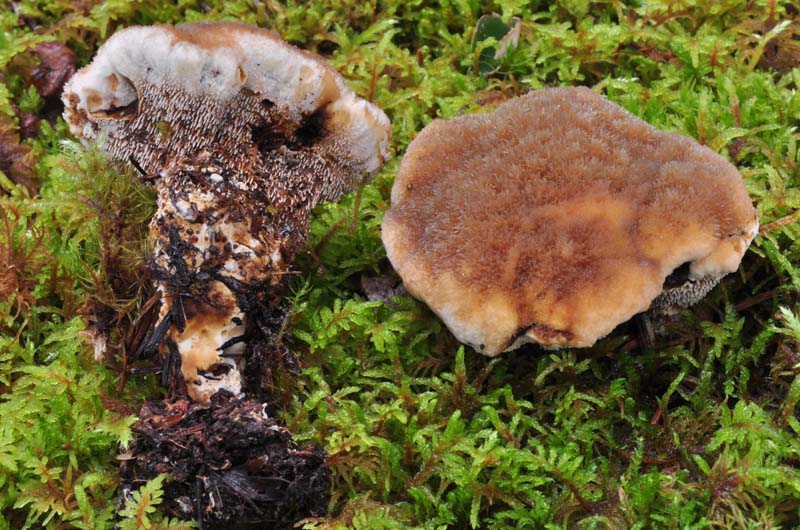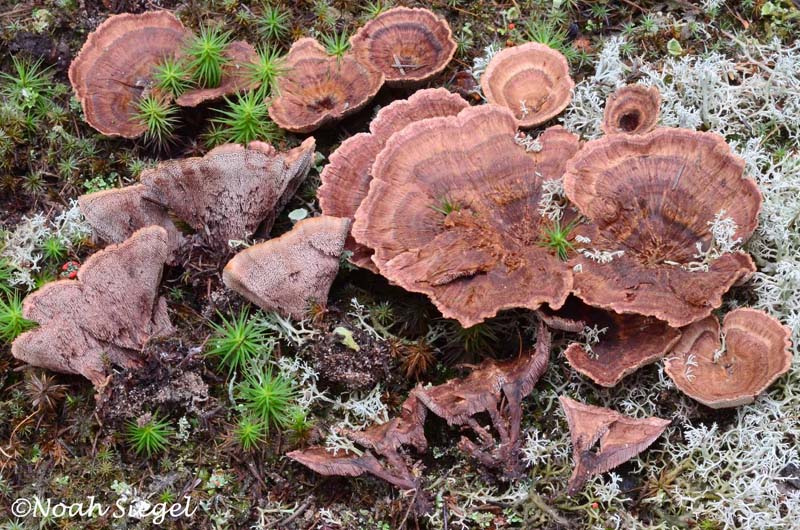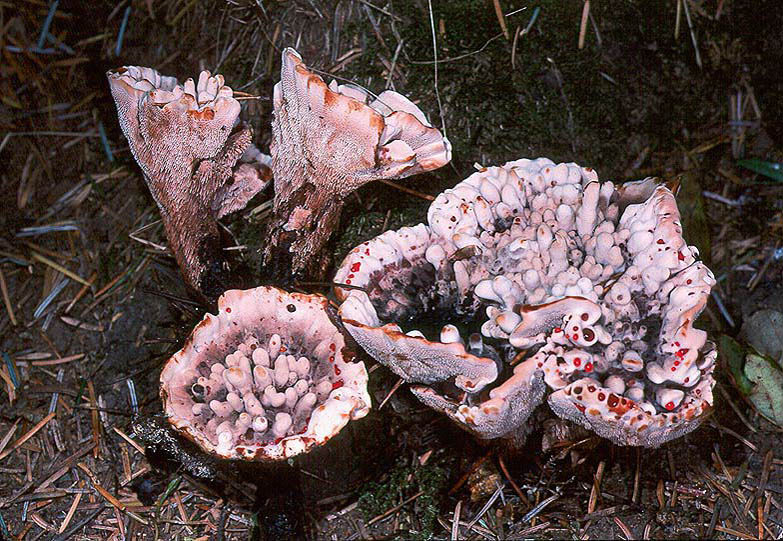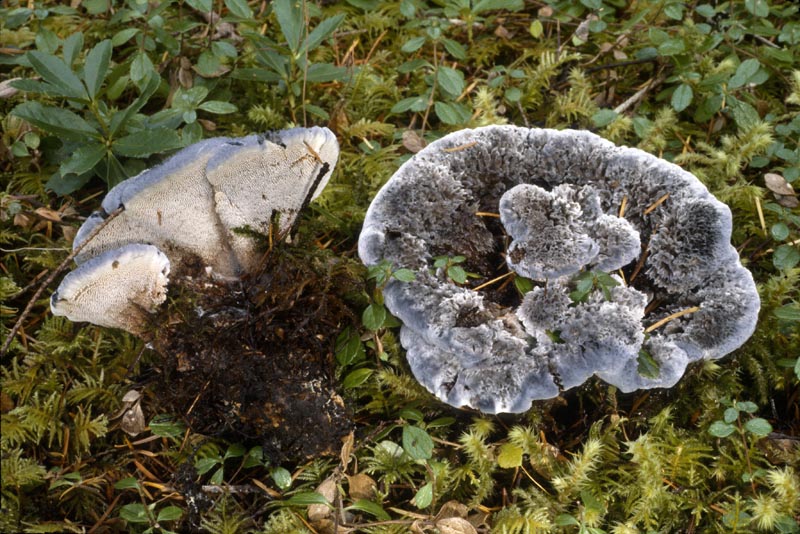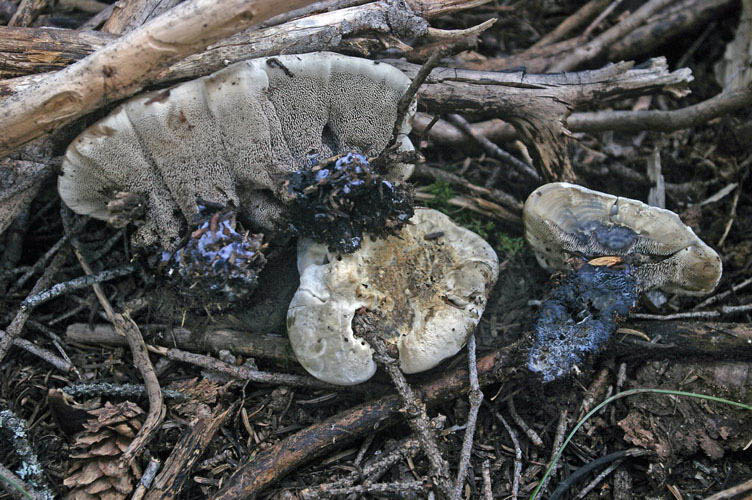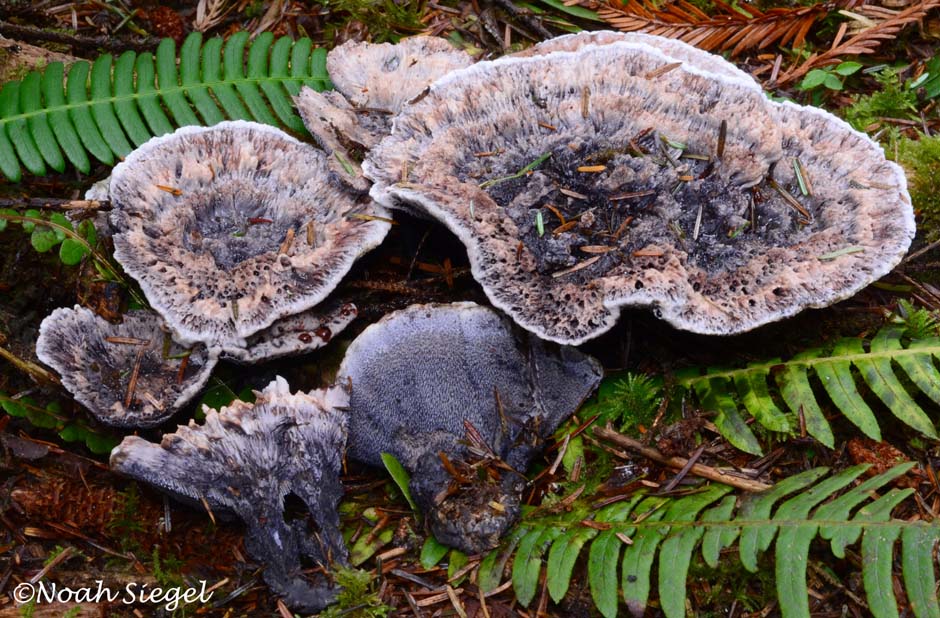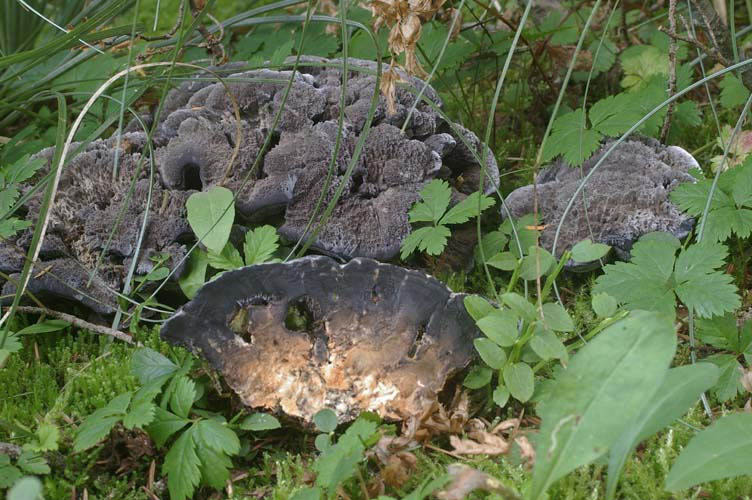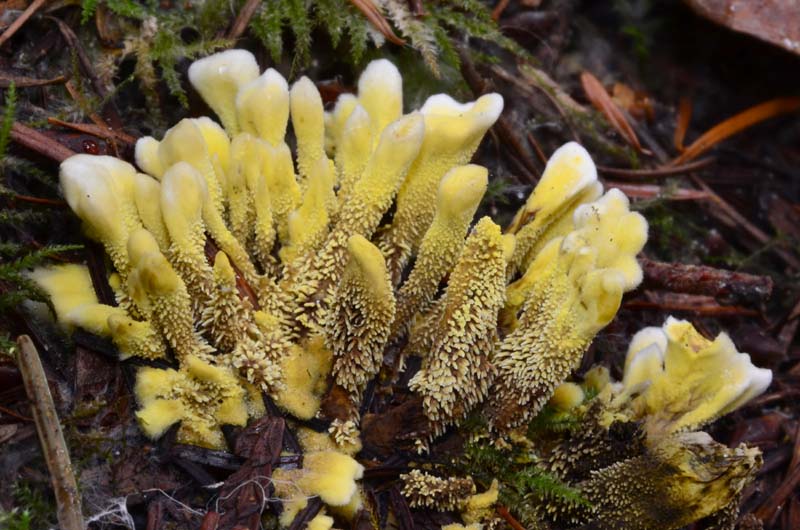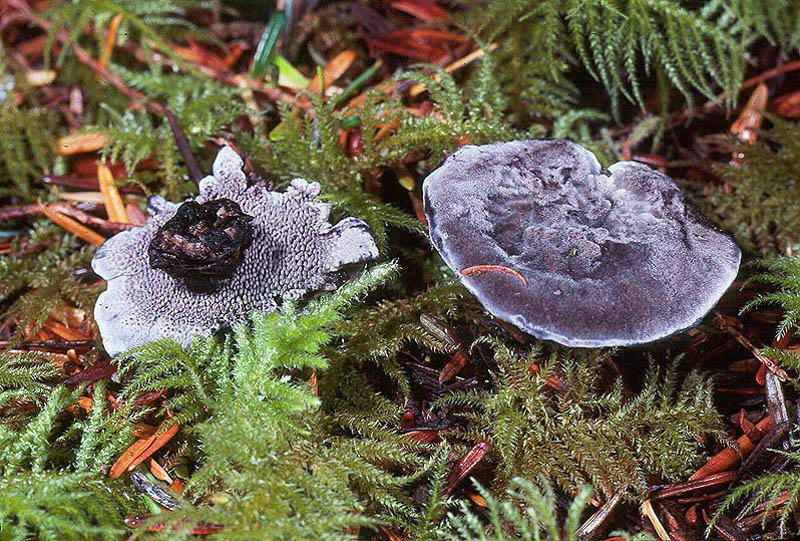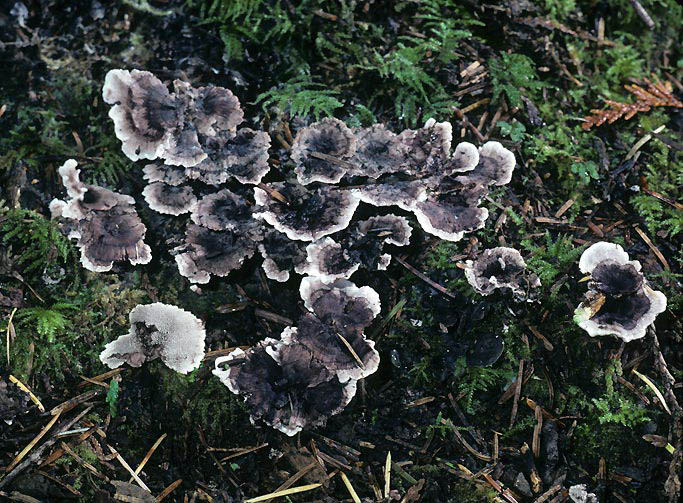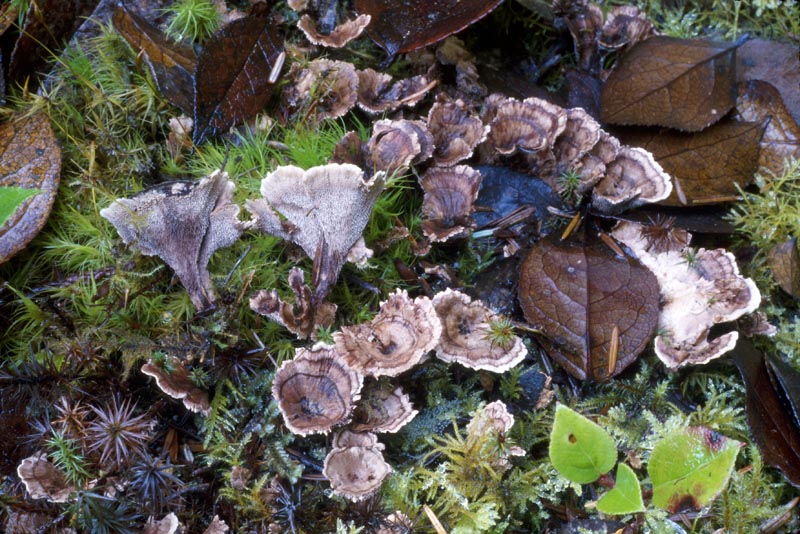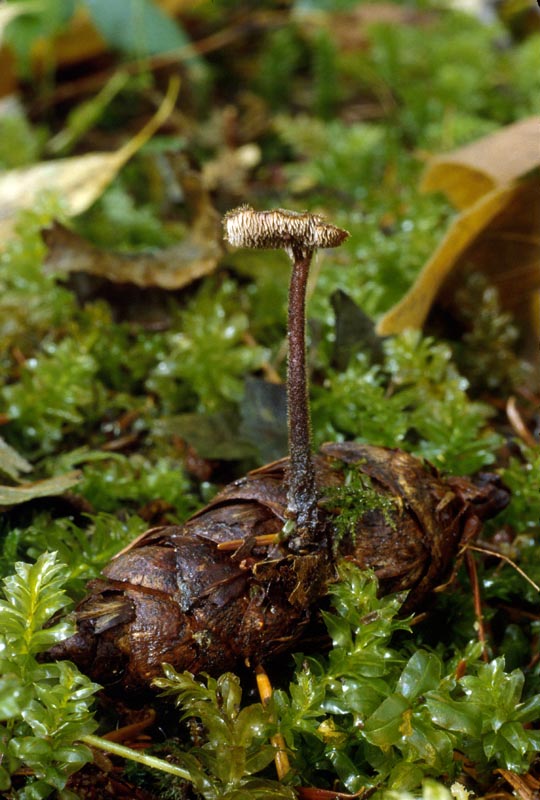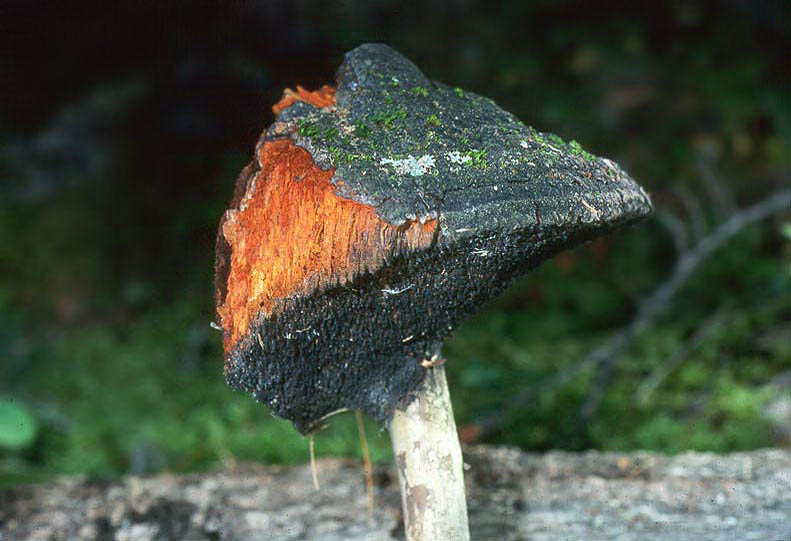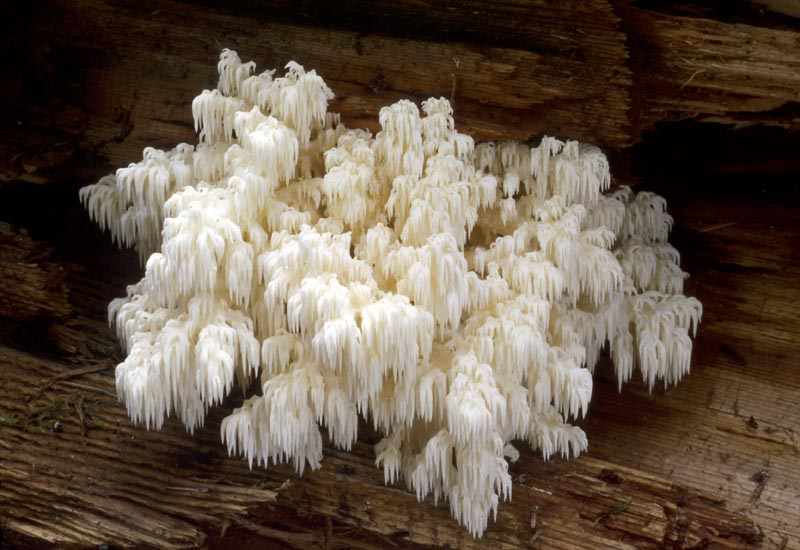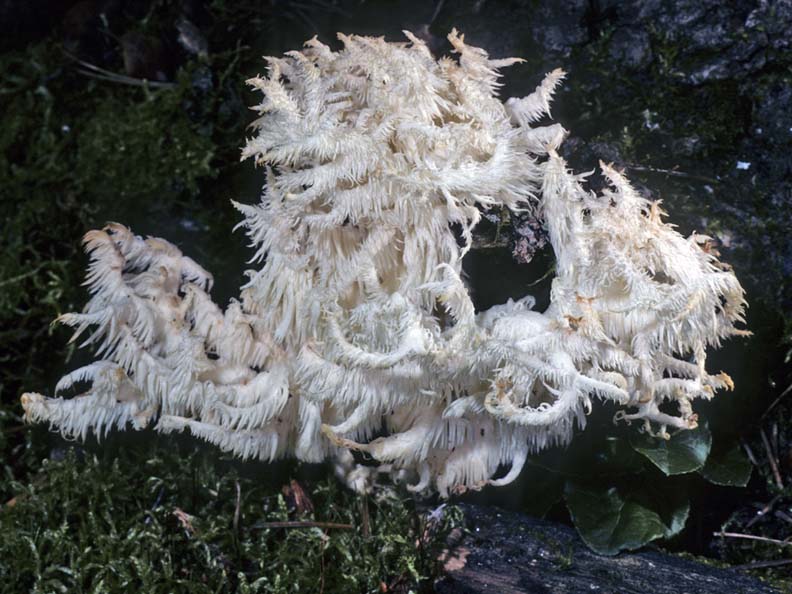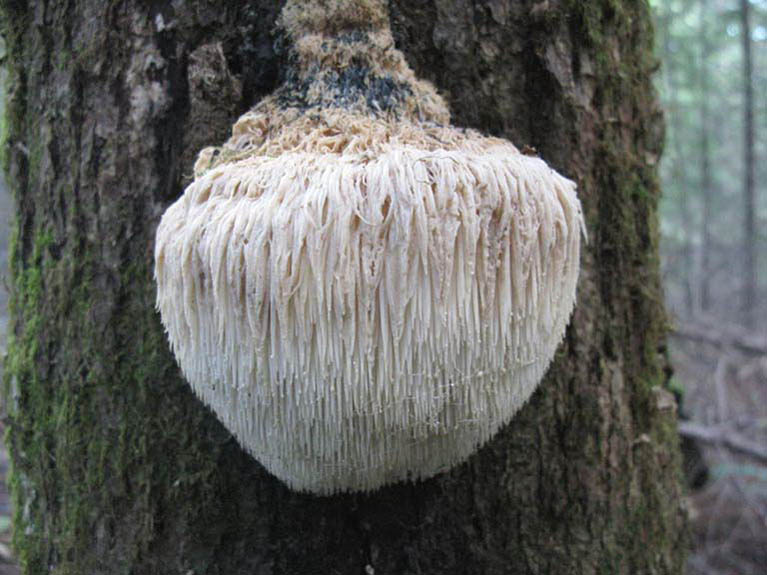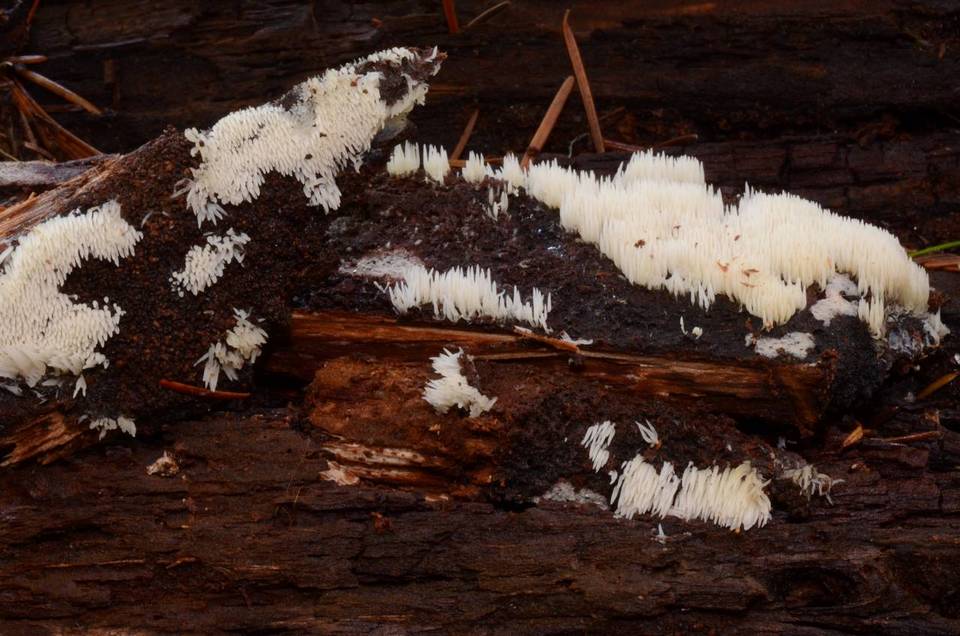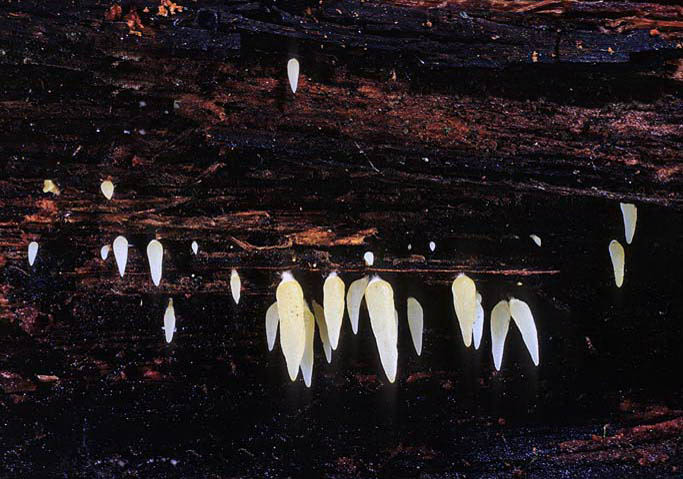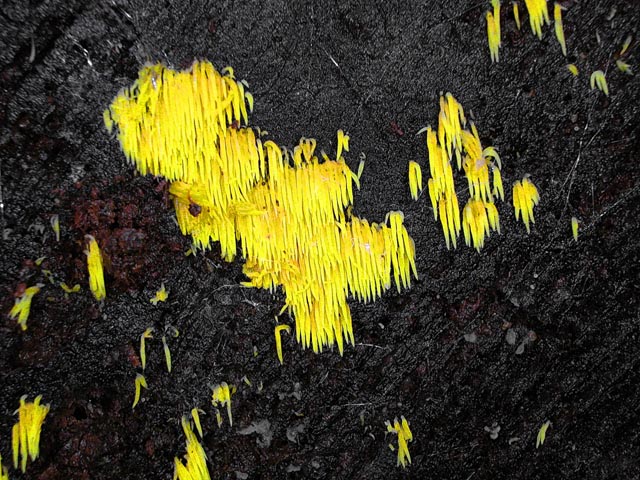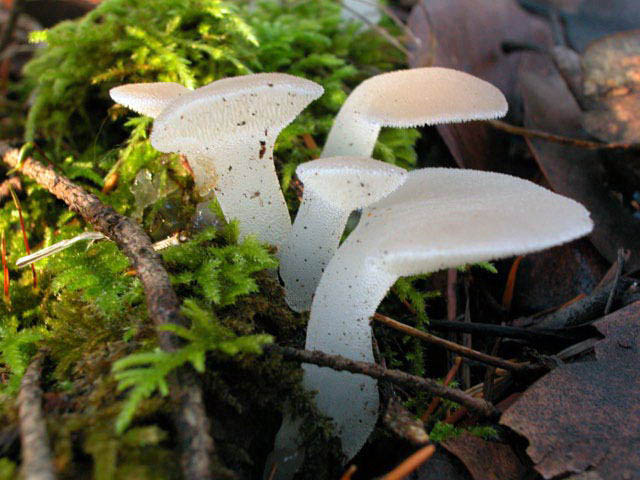"Crust" shaped fungus, removed from wood. Does not belong here. Compare with Mucronella and Hericium on this page.
Steccherinum ochraceum - spines and cap white to orange brown when fresh, flat on wood or partly curved away, cap sticking out ~1cm. See crusts.
Henningsomyces candidus - flaring white straws, less than 1/2mm wide! Related to gilled mushrooms (Agaricales - Marasmioid).
Key to Toothed Fungi:
- Hydnum/Sistotrema - soft with cap and stem, or small top shape, clean pale orange colouring. White spores.
- Sarcodon - cap and stem, sordid looking, brown spores.
- Bankera - cap and stem, sordid looking, white spores.
- Hydnellum - top shaped, thick flesh, brown spores.
- Phellodon - top shaped, thin flesh, white spores.
- Auriscalpium - tiny earpick with eccentric stem on cones.
- Echinodontium - toothed conk on wood.
- Hericium - ball of icicles on wood.
- Mucronella - small individual icicles hanging down from wood.
- Pseudohydnum - small white jelly with eccentric stem.
Hydnum - soft and edible, white to pale orange mushrooms with a cap and stem. White spores. Less sordid (dingy or dirty looking) than Sarcodon and Bankera (which can also be orange or white). Related to the chanterelle, and also mycorrhizal, growing on the ground. White spores like Bankera. Formerly called Dentinum.
H. umbilicatum group (H. 'umbilicatum'/
H. olympicum ('repandum') - white to orange, decurrent teeth like a chanterelle with teeth under the cap. Up to 15cm or more.
H. washingtonianum (neorepandum) - very similar with smaller spores.
H. 'jussii'/
Sistotrema confluens - a related somewhat stemmed mushroom, with irregular teeth under the white to pale orange "cap" (or pores or just wrinkles, making it difficult to key out). <2cm. Other species are crusts.
Sarcodon - These next four groups are also mycorrhizal and in the Thelephorales order, growing on the ground and they all have nodulose spores like Thelephora. Forgive me for editorializing, but these mushrooms are more sordid looking than the "clean" look of Hydnum, which can look very similar. The spores are warty and brown, unlike Bankera which are warty and white. Very confusingly, these were once called Hydnum (when Hydnum was called Dentinum). Usually from 5-15cm across, or sometimes larger, depending on the species. Most smell farinaceous or spicy. Sarcodon and Hydnellum are so closely related that most species are actually in Hydnellum, even though they have appreciable stems instead of being top-shaped. Only Sarcodon imbricatus, squamosus and leucopus have been proven to belong strictly to the genus Sarcodon. Sarcodon atroviridis needs a new genus name.
S. scabrosus - scaly brown cap, dark brown or greenish stem base, darker teeth. More bitter.
S. glaucopus - almost smooth cap with greenish stem base.
S. calvatus - our largest species, brownish cap breaking into small scales. Up to 25-30cm. May be fragrant.
S. leucopus (laevigatus) - smooth, cracking cap, grey-brown, stem and flesh stain lavender, curry odor like Bankera when dried.
S. subincarnatus - grey-brown with vinaceous tones, flesh stains pink when cut.
Bankera - Very much like Sarcodon but with small, white, spinier spores (spores are smaller with sharper spines than Sarcodon) and a little more sordid than the similar Hydnum. When dried out they will smell strongly like Maggi spice, a kind of maple curry odor. When fresh, the colours of these species are a little different than the brown spored Sarcodon, but you may need to take a spore print to differentiate them. Usually between 5-10cm across. Bankera and Phellodon are so closely related that some just call all of the Bankera by the name Phellodon as well.
Hydnellum -
tougher with firmer flesh than Sarcodon/
H. conigenum (auratile?) - thinner like Phellodon, brighter orange flesh and teeth.
H. complicatum - clustered orange rosettes, not farinaceous
H. complectipes - caps more fused together, farinaceous.
H. 'scrobiculatum' - red-brown, rough pitted cap, dark red-brown flesh, sometimes bleeding red, but not dramatically like H. peckii.
H. concrescens (zonatum) - thinner fleshed, smoother cap.
H. peckii - "strawberries and cream" - red drops when young, insanely hot peppery taste. Like H. scrobiculatum when old.
H. ferrugineum - mild taste, but local material may just be H. scrobiculatum.
H. cyanopodium - blue bottom, flesh and young cap. No licorice odor (unpleasant instead), may also bleed red juice.
Phellodon - smaller, <5cm across, with the short squat stature of Hydnellum, but "cap" flesh that is conspicuously thinner (but see the orange Hydnellum conigenum). With white nodulose spores and a strong odor of Maggi curry spice when dried just like Bankera. In fact, Phellodon and Bankera are so closely related the genera may need to be combined or rearranged somewhat.
P. melaleucus - blackish-brown, spines paler, even thinner flesh.
P. niger - similar with a tomentose stipe base with duplex flesh (hard centre).
These next groups are not mycorrhizal but saprophytic, and related to the Russulas.
Auriscalpium vulgare - "ear pick" - a distinctive tiny (<2.5cm) mushroom growing on douglas fir cones with an eccentric stem. Like Russula, it has amyloid spiny spores.
Echinodontium tinctorium - a perennial wooden conk on true fir and hemlock, bright rusty interior, spines under cap wear away irregularly. Easily mistaken for a polypore. Like Russula, it has amyloid, spiny spores. Popular for dyeing clothing.
Hericium - a mass of spines hanging down from dead wood, distinguished by their shape and habitat, also in the Russulales, with minutely spiny amyloid spores.
H. americanum - (used to be called H. coralloides) - similar but less branched, but usually found on hardwood.
H. coralloides (ramosum) - smaller spines (<8mm) distributed along the entire branch, sometimes in small tufts, with a more open and coralloid look. Usually on Hardwood.
Mucronella - individual teeth hanging down from wood resembling crusts and sometimes growing upwards when young like club fungi. Each tooth is usually <1cm long. They are somewhat related to gilled mushrooms in the Agaricales, along with the Clavaria club fungi.
M. calva/alba (
Pseudohydnum gelatinosum grp - teeth underneath the cap! White, <5cm, on conifer debris.
Actually a jelly fungus in the Auriculariales.
